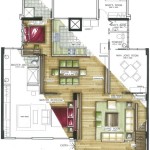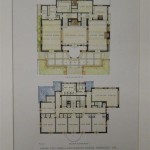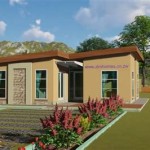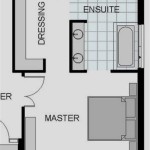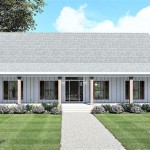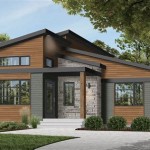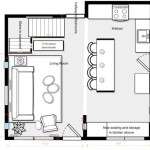Prairie House Plans: A Guide to Design and Inspiration
Prairie houses, characterized by their low-pitched roofs, horizontal lines, and connection to nature, have become a timeless architectural style. The movement, which originated in the early 20th century, championed functional design, open floor plans, and a harmonious relationship between the interior and exterior spaces. Today, Prairie houses continue to inspire architects and homeowners alike, offering a unique blend of aesthetics and practicality. This guide dives into the key features, design principles, and inspirational examples of Prairie House plans.
Key Features of Prairie House Plans
Understanding the defining characteristics of Prairie houses is crucial for comprehending their unique appeal. The hallmark elements of this style include:
- Low-Pitched Roofs: Prairie houses feature roofs with gentle slopes, often extending over the eaves to create covered porches. This design element creates a sense of horizontality and emphasizes the connection to the surrounding landscape.
- Horizontal Lines: The focus on horizontality is further emphasized through the use of wide, low-slung windows, continuous bands of brickwork, and carefully placed horizontal trim. This intentional use of horizontal lines reinforces the feeling of connection to the ground and creates a sense of openness and spaciousness.
- Open Floor Plans: Prairie houses prioritize open floor plans, eliminating unnecessary walls and corridors to create a seamless flow between living spaces. This open layout promotes a sense of community and allows for a fluid circulation throughout the home.
- Integrated Outdoor Spaces: Prairie houses seamlessly integrate outdoor spaces into the design. Covered porches, terraces, and gardens are often treated as extensions of the living spaces, blurring the lines between the interior and exterior. This strong connection to nature is a key feature of the Prairie style.
- Natural Materials: Prairie houses embrace the use of natural materials such as wood, brick, and stone. These materials are often left exposed, showcasing their inherent beauty and texture. The use of natural materials adds warmth and authenticity to the design, creating a sense of groundedness and harmony with the surrounding environment.
Design Principles of Prairie Houses
Beyond the visual elements, Prairie House plans are guided by a set of design principles that emphasize functionality, simplicity, and harmony with nature.
- Form Follows Function: This principle, championed by architect Louis Sullivan, emphasizes that the design of a building should be driven by its intended purpose. Prairie houses embrace this principle, focusing on creating spaces that are both beautiful and functional.
- Simplicity and Craftsmanship: Prairie house plans prioritize simplicity in design, using clean lines, minimal ornamentation, and high-quality materials. The emphasis on craftsmanship is evident in the meticulous attention to detail, from the construction of the windows and doors to the selection of natural materials.
- Connection to Nature: Prairie house designs strive to create a harmonious relationship between the home and the surrounding landscape. Large windows and open floor plans allow for abundant natural light and views of the outdoors. Outdoor spaces, such as porches and gardens, become integral parts of the living experience.
Inspirational Prairie House Plans
The legacy of Prairie houses continues to inspire architects and homeowners today. Several notable examples of Prairie house plans showcase the versatility and enduring appeal of this architectural style.
- Frank Lloyd Wright's Robie House (Chicago): This iconic example of Prairie architecture features a distinctive horizontal design, a low-pitched roof, and an open floor plan. The Robie House is a testament to the elegance and functionality of the Prairie style.
- Walter Burley Griffin's "Prairie Avenue" (Chicago): Griffin's innovative designs for the Prairie Avenue neighborhood exemplified the key features of Prairie houses, with a focus on open floor plans, natural materials, and a harmonious connection to nature.
- Modern Prairie Houses: Contemporary architects continue to incorporate the principles of Prairie architecture into modern designs. These modern adaptations often incorporate sustainable materials, innovative energy-efficient technologies, and contemporary finishes while maintaining the core elements of the Prairie style.
Exploring Prairie house plans and design principles offers a unique opportunity to understand the enduring appeal of this architectural style. From its emphasis on functionality and simplicity to its harmonious connection to nature, Prairie architecture continues to influence modern home design and inspire creativity in the built environment.

Prairie House Plans Monster

Prairie Style House Plans Sater Design Collection

Modern Prairie House Plan 1270 The Whispering Meadows 2544 Sqft 4 Beds 2 1 Baths

Prairie Style House Plans Floor Designs Houseplans Com

Dream Prairie Style House Plans Designs

Wonderful Prairie Home Plan 8592ms Architectural Designs House Plans

Prairie And Craftsman House Plans A Style Guide Houseplans Blog Com

Prairie House Plans Monster

Prairie Fields Farmhouse Plan Archival Designs

Prairie Style House Plans Floor For Builders

